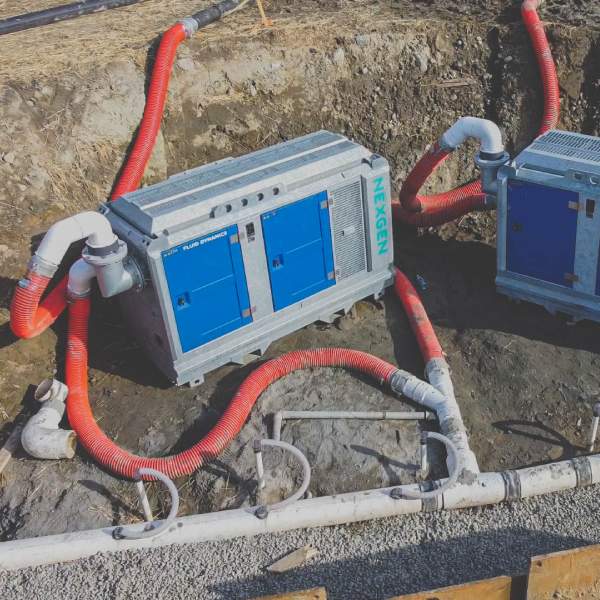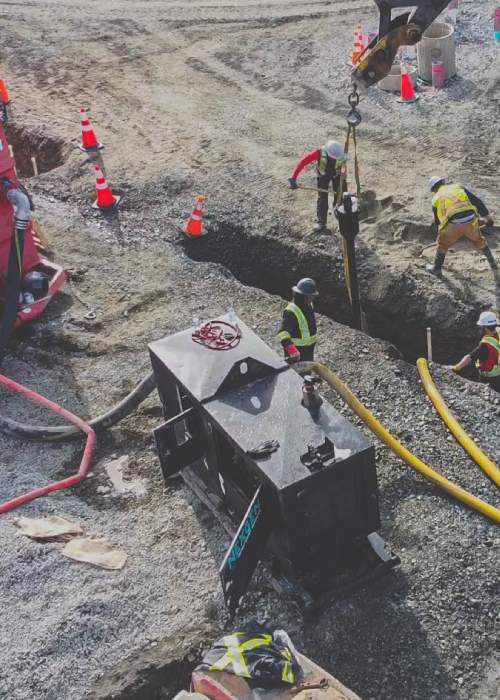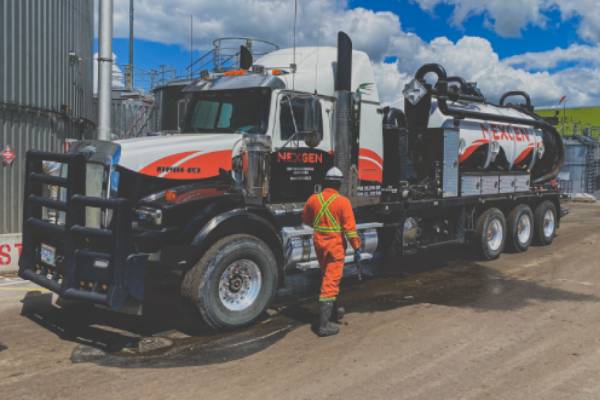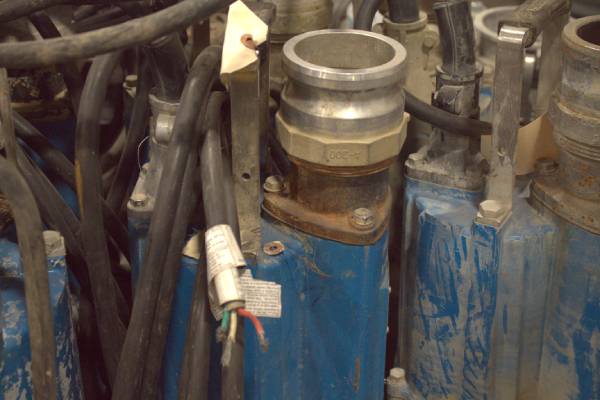Highly Effective Wellpoint Systems for Rapid Water Removal
With extensive experience in wellpoint systems, Nexgen Environmental offers solutions tailored to each site’s individual needs across Western Canada
We’ve got you covered!
Efficient
Versatile
Low Impact
Environmentally sensitive wellpoint system solutions that require minimal excavation posing no risk to groundwater quality
Wellpoint systems environmental solutions.
Nexgen Environmental has been providing wellpoint system solutions in Western Canada since 2016. We comply with a variety of Canadian regulatory requirements at the federal, provincial, and municipal levels. We have developed a reputation for our level of expertise, compliance, quality of work, customer service, innovation and sustainable wellpoint system solutions. As a result of our partnership with municipal governments and engineers, we have the capacity to issue permits on-time and within schedule.
We understand that site conditions and surface water quality can change unexpectedly, and so too do the treatment solutions used to treat them.

Wellpoint systems groundwater control
As a wellpoint systems provider we comply with federal, provincial, and municipal environmental regulations, including those related to the discharge of water, air emissions, and hazardous materials.
Water rights, zoning and land use
Our wellpoint systems help in removing excess water from the soil, which can increase soil stability and prevent collapse or erosion. As such, we must comply with Canadian legal operational standards. Some provinces may require the need to obtain water rights in order to extract groundwater for dewatering purposes. In addition, the use of wellpoint systems for dewatering may be subject to zoning and land use regulations.
We have the capacity to obtain water rights with ease, and as a wellpoint systems provider we comply with zoning and land regulations in order to proceed with environmentally friendly dewatering operations.
Wellpoint safety and compliance
The Canada Labour Code and provincial occupational health and safety regulations set safety standards for the operation of dewatering equipment. As a wellpoint systems provider Nexgen Environmental must comply with these standards in order to protect workers from hazards.
Wellpoint systems permits and approvals

Quality wellpoint system services
Efficient wellpoint systems
We install highly effective wellpoint systems that lower the water table. The use of our vacuum pumps along with the diameter of the wellpoints creates a strong drawdown effect which can quickly and efficiently remove groundwater from the soil. This is important for construction or excavation projects that need to be completed within a tight schedule.
Low environmental impact
Our wellpoint systems have a relatively low impact on the surrounding area, especially when compared to other dewatering methods like open pumping or sump pumping. The installation process is minimally invasive, and the small size of the wellpoints means that there is less disruption to the surrounding soil and vegetation. This can be especially important in environmentally sensitive areas or areas where there are concerns about damaging nearby structures.
Cost-effective solutions
Wellpoint systems can be a cost-effective solution for dewatering, especially for smaller projects or those with limited budgets. The relatively low cost of the equipment and the quick installation process can help keep costs down, and the efficiency of the system can reduce the overall dewatering time, which can further reduce costs. Additionally, wellpoint systems can be easily scaled up or down to meet the specific dewatering needs of a project, which can help keep costs in line with the scope of the project.
Request a consultation today!
Wellpoint systems project specialists
Nexgen Environmental designs and installs wellpoint systems in vertical wells around the perimeter of the excavation site. We equip the wells with screens or filters that allow water to flow into them, which is then pumped out of the excavation site to control the groundwater level.
The project scope for a wellpoint system may include the following:
2. Design and engineering: Third party engineers and consultants develop a detailed plan for the installation of the wellpoint system, including the number and location of wells, the size and depth of each well, the pump and piping system, and any other necessary components.
3. Installation: This involves the actual installation of the wellpoint system, which may include drilling or excavating wells, installing screens and filters, connecting pumps and piping, and testing the system to ensure it is functioning properly.
4. Operation and maintenance: This involves monitoring the wellpoint system during the dewatering process to ensure it is working effectively, making adjustments as necessary, and performing routine maintenance to keep the system in good condition.
5. Decommissioning: This involves removing the wellpoint system and restoring the site to its original condition once the dewatering process is complete.
To learn more about our wellpoint system solutions and to request a consultation, be sure to contact us!
Years Established
Completed Projects
Related Services

Vacuum Truck
Removal of water and sediment, as well as, the transportation of collected material to a treatment facility for processing.

By-Pass Systems
Our team of experienced technicians employ various methods to redirect and control water flow for your project.

Pump Repairs
We diagnose, troubleshoot, repair and restore malfunctioning pumps used to remove water from various construction sites.
Let’s discuss your next project!
Our primary goal is to lower the groundwater table in your construction site, to allow excavation or construction work to be carried out in a dry, safe and stable environment.
Contact us for a free estimate!
How do wellpoint systems work?
Wellpoint systems work by creating a vacuum in the soil, drawing water and air from the ground, and lowering the groundwater table to create a dry work environment.
What are the components of a wellpoint system?
The components of a wellpoint system include wellpoints, header pipes, pumps, and discharge pipes.
How do you determine the number of wellpoints needed for a specific construction site?
The number of wellpoints needed for a construction site depends on factors such as the size of the site, soil type, groundwater level, and the required lowering effect. A dewatering contractor can help determine the number of wellpoints needed for a specific site.
Can wellpoint systems be used for all types of soil?
Wellpoint systems can be used for many types of soil, including sand, gravel, and silt. However, they may not be effective in clay or bedrock.
What maintenance is required for a wellpoint system?
Regular maintenance is required for wellpoint systems, including checking and cleaning filters, monitoring pump performance, and repairing any damaged or clogged pipes.
How long can a wellpoint system be left in place?
Wellpoint systems can be left in place for the duration of the construction project, but they may need to be adjusted or relocated as the excavation progresses or the groundwater level changes.
Can wellpoint systems be used in areas with high water tables?
Yes, wellpoint systems can be used in areas with high water tables, but the number of wellpoints needed may be higher, and the dewatering process may take longer.
